Not Your Typical Tween Drama
It’s been a common occurrence here of late. A small voice with a note of panic echoing down the stairs at night.
“Mum, can you come upstairs?”
When I get there, I find a terrified preteen. Sometimes she’s hiding under her covers with only her eyes peeping out. Other times, she’s outside her room on the landing hugging a stuffie she’s had since she was literally a baby tight to her chest.
It’s a scene I recognize all too well from my own childhood.
Most of the time when we talk about childhood development, we speak in terms of physical, mental, and emotional changes. We discuss hormones, acne, BO, and tempestuous behavior. Only very rarely do we see discussion of *other* changes – if at all.
Liminality and Discernment
The transition from child to teenager is a liminal time, and in my experience, one of intense spiritual development. There’s a ramping up of activity and expanding of senses that is often scary, and sometimes even deeply traumatic.
As a child, I was yet to develop the ability to discern between helpful and harmful, and because of this, even the slightest hint of uncanniness scared me. I’ve always seen the world as being somewhat “pixelated,” even while wearing glasses. If you’ve ever sat so close to the TV you can switch between seeing the full picture and the pixels, it’s similar to that. The only exceptions for me – the only solidity – are ensouled beings.
As a child, I learned to notice the “pixels” getting “buzzy” as a precursor to the temperature drop preceding a ghost. I also learned to leave the room when my dog did – that he tended to pick up the coming uncanniness even before the change in pixels.
I suspect it’s similar for my child. Helpful or harmful, it doesn’t matter. At the first signs of uncanniness, she’s now afraid.
A Blast From The Past
In many ways, I was lucky as a child growing up with that kind of sight. My dad’s family have been Spiritualists for generations – pretty much since the movement landed on their shores – and family lore suggests they were involved in similar practices before that era as well. Now, I’m not claiming to have learned “ye olde craft” unbroken here. But I did grow up with a dad who healed people and who got taken over by his spirit guide from time to time. Unlike so many others, I had the benefit of someone to talk to about my experiences, someone to learn from.
More importantly though, I had someone to help when things got bad.
For example, once when I was 17, I made a rag doll. That’s not much of a story on its own, but it got possessed by something deeply malevolent – the most malevolent being I’ve felt to date. Long story short, my dad got possessed by his guide and took care of it, and I never want to see a doll’s facial features move again.
Sidenote #1: people could have saved themselves so much of that Annabelle nonsense had they just done what my dad did with the ragdoll I made and tossed it in the wheelie bin.
Sidenote #2: this is also why I don’t make dolls anymore. Not unless they’re to be consecrated as a “house” for someone specific. And I do that consecrating as soon as I’m finished.

So, that was a good thing. Having my dad to go to was incredibly helpful. He was also the first to get me practicing sensing and manipulating energy.
The Ups And The Downs
However, it’s important to realize that there are pros and cons to every situation.
Here in the States, Spiritualism is largely practiced in churches and communities like Lilly Dale. But in Northern England, Spiritualism largely became a family-based practice passed on from parents to children. My dad learned from his parents, both of whom were practitioners. I’m not sure who his mum learned it from (though her siblings were also Spiritualists), but his dad also learned it from his parents in turn (both of whom also came from families of practitioners).
What I’m saying, is that there’s no tidy and standardized tradition here. The practices of my family are one of many expressions of that form of Spiritualism.
Initially, Spiritualism began with the initial premise that we continue to exist after death and that communication beyond the “veil” is possible (i.e., necromancy). That was how it began in 1850s upstate New York. But over the years, elements of Theosophy and Hermeticism also made their way into the movement as well.
Nowadays, ideas spread like wildfire online. However, prior to the internet, ideas largely spread between family groups within this specifically northern English context via random encounters with other Spiritualists while out and about in the world.
(Spiritualists, like Witches, have a tendency to “sniff” each other out, you see.)
Imagine a giant game of “Telephone” where no one knows who is playing or how many players there even are, and then the information from that game being used in necromancy and healing. That’s kinda close to what it was like. Sometimes the other player you knew was “Greg who works in the fruit and veg section at the supermarket on Thursdays.”
A Brief Interlude
For what it’s worth, I consider that influx of outside influences detrimental to Spiritualism. Kardec was absolutely right to guard against them by building out the doctrine of Spiritism. Among other issues, the Theosophical elements reduced the feorin (fairies) of my local area to “lower level elementals,” helping to erode traditional understandings of those peoples, and introduced hierachies among spiritual paths (e.g Dion Fortune’s formulation of the “green ray” path being lesser than others).
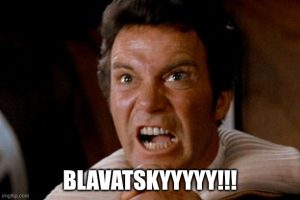
And Back To The Story…
In addition to this rampant eclecticism, many Spiritualists in the area where I grew up also placed a great deal of value on being taught “by Spirit” (as opposed to by other humans). As far as they were concerned, that is where the most power lies. Aside from his parents, my dad’s main teacher is “Spirit.” And even a few years shy of 80 and despite some serious health issues, the man is still a presence. Sit next to my dad when he’s even slightly in that mode, and the hairs on your arms stand up on end. Ouija boards used to stop working around him just because he told them he had no intention of talking to them.
But do you see what I mean about none of this being tidy? Despite what people may imagine about growing up in a family tradition like that, there is no set anything. Even unbroken for a few generations, there is nothing pristine being handed down. Just a whole lot of magic magpies doing the best with what they have (while calling up the dead, dealing with hauntings, and casually getting possessed by spirits – as you do).
One of my dad’s biggest challenges in getting me through these developmental stages was our different experiences of the dead and otherworldly. Where I see, hear, and otherwise sense the dead and other, he can sense when somebeing is there, but little else. He relies on his guide for discernment and doing what needs to be done from there. Clearly at a loss and desperate to help me, my dad often asked the other Spiritualists he encountered for their advice, and this is where the pitfall I now hope to avoid with my kid emerged.
Welcome To Rando SpirtualismLand (Flag Probably Not Coming Any Time Soon)
As a parent, I now know what it’s like to see my child too terrified to go into her room. The child I was has never forgotten what lies beneath the requests to bring the cat with her to bed at night (regardless of the cat’s thoughts on the matter). I don’t blame my dad one bit for any of this. If anything, I admire his willingness to seek outside help when so many others would have simply pretended they weren’t out of their depth. The only thing I wish he’d done differently was trust in himself and his own wisdom more.
Because unfortunately, the advice my dad returned with was poison.
Nowadays, we can ask an entire world of people for advice thanks to the Internet. Before then though, you had library books and the word of others. The other that time was someone he’d initially met while at the supermarket, chatted with, then found that both he and the guy he was conversing with were each stood off to the side of their bodies.
“Shall we get back to our bodies then?”
“Aye, we’d better had.”
And honestly, that’s just another day in rando SpiritualismLand.

My dad had absolutely no idea that the advice he was conveying was the Law of Attraction or that it would prove harmful. From his perspective (as someone who didn’t see and hear these beings), it must have seemed an easy solution for me to stop being a magnet for spirits.
“Just raise your vibration. Like attracts like. Raise your vibration, and then only the good beings will bother you. A home full of love is the only protection we need.”
Well, that went about as well as you’d imagine. I had no idea what on earth these “vibrations” were or how to “raise them.” Worse still, I felt as though I was at fault for my experiences. And even worse than that, I felt as though I had nowhere to turn to feel safe – a core need for a child.
Sometimes, folks, bad advice is better than none at all.
A Better Story?
Nowadays, I tell my kid that children like her who see and hear as she does are like beacons. I ask her to remember what it was like to look out of the plane window at night the last time we flew, and to imagine those sparse lights over the rural areas children just like her. She is bright to the dead and Other through no fault of her own.

Ironically, this was the same thing my dad used to tell me *before* going to his friend for advice. It’s really a pity how often our desperation to do right by our children drives us to the bad counsel of others over the wisdom of our own souls. As I said earlier, I wish my dad had trusted himself more.
At the age of 13, I took my first steps in Witchcraft. A simple circle – nothing too taxing. But that circle was life-changing. Now, I could write about how I felt like I was right where I was meant to be – that I was stepping into alignment with fate(because I absolutely did) – but the most striking thing for me at that moment was actually the feeling of finally having a barrier – of having tools.
Suddenly, I was no longer relying on a love-filled home for protection. I mean, don’t get me wrong: love is powerful. And my parents’ home was and is indeed filled with love. However, there are situations where love just simply isn’t enough, and this happened to be one of them.
My Dad’s Shoes
Now, I find myself fully in my dad’s shoes. It’s my turn to pass on what I know while hoping I’m doing the right thing. Family lore aside, I can’t claim to come from a lineage of Witches or cunning folk, but my own walk along the crooked path has brought Witchcraft to that line of Spiritualists regardless. Whether my daughter makes her own way down that same path is entirely up to her. I can only teach her what I know, give her tools she needs, and hope she comes through this empowered and cunning, ready to dance with the numinous, breathe blessings into teas, and hurl hexes as needed. With luck, she’ll avoid the years of struggle and eventual desensitization I went through.
When I first sat down to write this post, I intended to write a discussion of practical measures for parents going through the same thing. Instead, I wound up telling you my experiences, my dad’s efforts to help me, and how I now find myself in his shoes. Hopefully, this serves as a warning against the Law of Attraction when supporting kids through this stage and a reminder of the importance of good barriers. I also hope that my story makes it clear that none of us have this down – that even the most loving parents can and do make mistakes, and that not even a childhood with necromancers and healers guarantees greater knowledge or success.
At the end of the day, all we can do as parents is our best by our children. Such has been the way of parenthood since the very beginning, and despite the many, many “secret sauce” solutions offered by experts of various stripes, I doubt that’s going to change.
My dad may not have known how to keep these beings from our home, but he was right about love being important. It isn’t a barrier, but it is sustaining. So, make sure your kids know they’re loved – that you’re always there for them no matter how weird or scary it gets, and be that barrier as needed. You may not get it right, but as someone who’s come through that particular fire with burned feet, believe me when I say that love can be the difference between broken and whole.
Be well, lovely people. Until the next time!

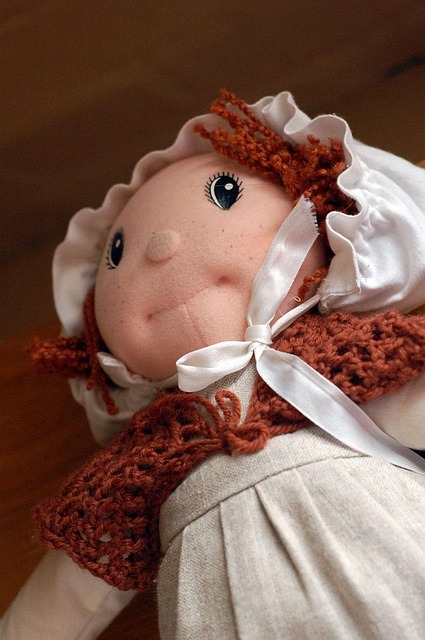






 rising of the Pleiades. Moreover, their Beltane disappearance coincided with the yearly disappearance of the Pleiades from the night sky. It seemed a little too coincidental, especially when the characters you’re writing are Gentry who worship the ‘Seven Queens’.
rising of the Pleiades. Moreover, their Beltane disappearance coincided with the yearly disappearance of the Pleiades from the night sky. It seemed a little too coincidental, especially when the characters you’re writing are Gentry who worship the ‘Seven Queens’. As outlandish as all of this may seem, this is not so different from the kind of otherworldly interest in creative types recorded in older sources. The storytelling bard has become the TV show writer, artists who may have painted scenes from Fairy while locked up in Bedlam, now create digitally, and famous Fairy-Firkler Morgan Daimler has been pointing out the weird waves of disinformation about Themselves online for a while.
As outlandish as all of this may seem, this is not so different from the kind of otherworldly interest in creative types recorded in older sources. The storytelling bard has become the TV show writer, artists who may have painted scenes from Fairy while locked up in Bedlam, now create digitally, and famous Fairy-Firkler Morgan Daimler has been pointing out the weird waves of disinformation about Themselves online for a while. their own Pagan period peers. Yes, as unjust as a monstrous read is when it comes to figures like Medusa and Circe, that’s probably how many people at the time probably saw them.
their own Pagan period peers. Yes, as unjust as a monstrous read is when it comes to figures like Medusa and Circe, that’s probably how many people at the time probably saw them. If there’s one thing about the underlying ‘string-pullers’ of Hellier, it’s that the history doesn’t quite add up – at least not in the usual way. Greg is sent a pdf of The Rebirth of Pan: Hidden Faces of the American Earth Spirit, a book by a man called Jim Brandon (pseudonym). It’s a wild ride through archaeology, conspiracy theory, cryptozoology, paranormal phenomena, and Crowley. Rather than the Ancient Greek figure, the ‘Pan’ spoke of in this book (a being which the author argues is actually the conscious, collective identity of the earth/contained within the earth) is an aggregate term, a way of naming what the author believes to be manifestations of this consciousness of/within the earth.
If there’s one thing about the underlying ‘string-pullers’ of Hellier, it’s that the history doesn’t quite add up – at least not in the usual way. Greg is sent a pdf of The Rebirth of Pan: Hidden Faces of the American Earth Spirit, a book by a man called Jim Brandon (pseudonym). It’s a wild ride through archaeology, conspiracy theory, cryptozoology, paranormal phenomena, and Crowley. Rather than the Ancient Greek figure, the ‘Pan’ spoke of in this book (a being which the author argues is actually the conscious, collective identity of the earth/contained within the earth) is an aggregate term, a way of naming what the author believes to be manifestations of this consciousness of/within the earth.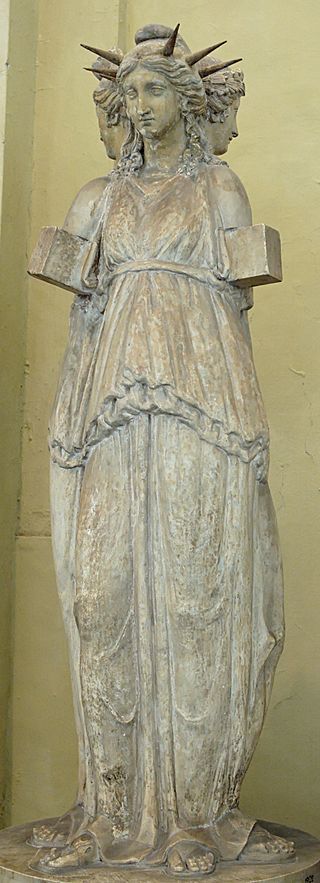 kid’ on the block. Based on what I’ve seen so far of this new kid, I’m pretty sure the ‘old kids’ aren’t too happy with it. Something – a collection of beings in a trench coat masquerading as something else is trying to come onto their turf. And as humans, the creators and consumers of stories that shape the dominant consensus, we’re faced with a choice (another one).
kid’ on the block. Based on what I’ve seen so far of this new kid, I’m pretty sure the ‘old kids’ aren’t too happy with it. Something – a collection of beings in a trench coat masquerading as something else is trying to come onto their turf. And as humans, the creators and consumers of stories that shape the dominant consensus, we’re faced with a choice (another one).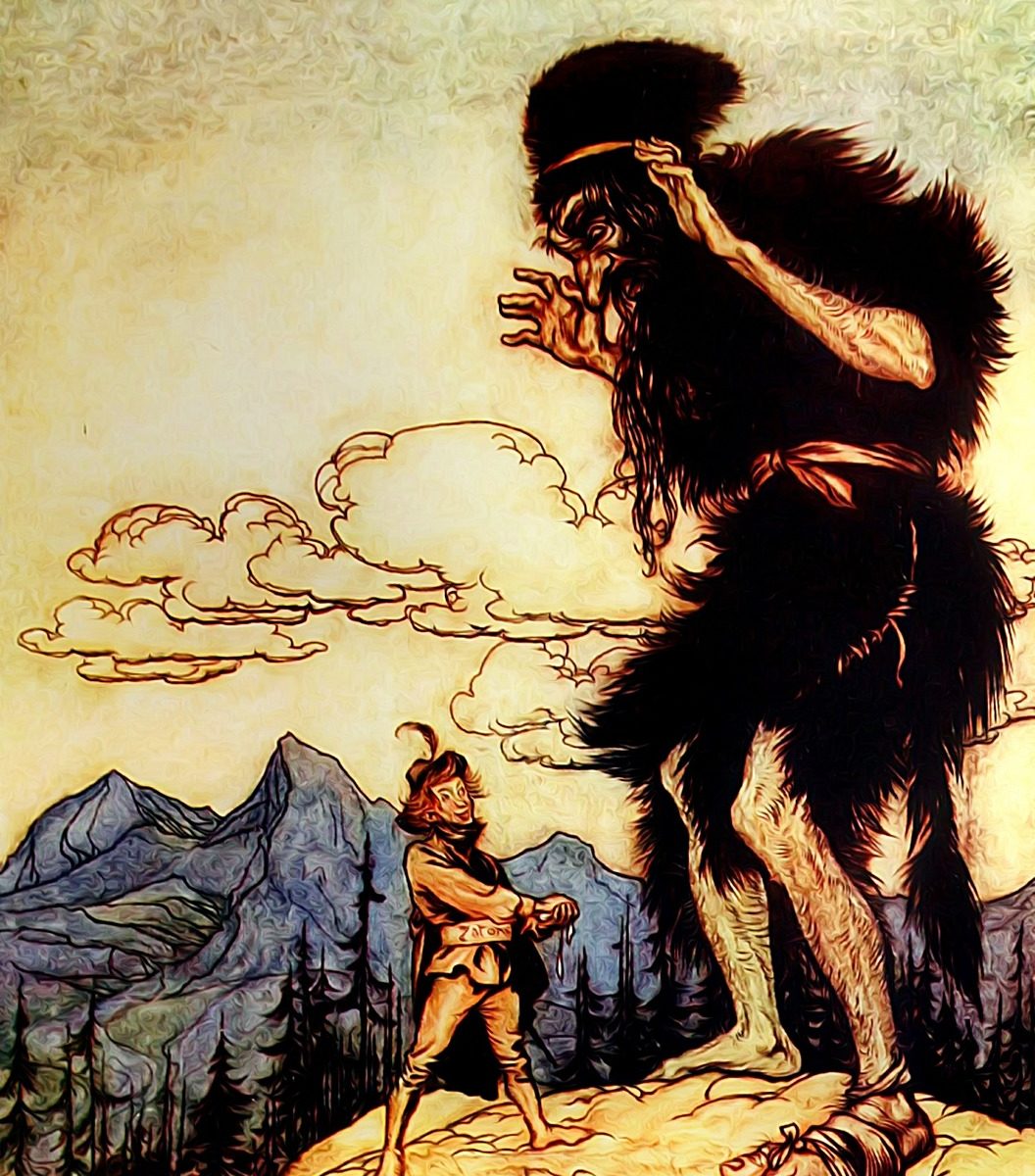
 book”, or “just a story”. Storytelling, in whichever form it takes, is inherently magical. It is the mirror that shows us who we are, shadows and all. But most importantly, it can be an agent for change. Especially when millions of people become emotionally invested in a story.
book”, or “just a story”. Storytelling, in whichever form it takes, is inherently magical. It is the mirror that shows us who we are, shadows and all. But most importantly, it can be an agent for change. Especially when millions of people become emotionally invested in a story. created through mysterious and deadly processes in order to fight the otherworldly and monstrous on the Continent. It sounds like the stereotypical D&D dungeon crawl (but on TV), right?
created through mysterious and deadly processes in order to fight the otherworldly and monstrous on the Continent. It sounds like the stereotypical D&D dungeon crawl (but on TV), right? cops on Black people for having the audacity to have a BBQ.
cops on Black people for having the audacity to have a BBQ.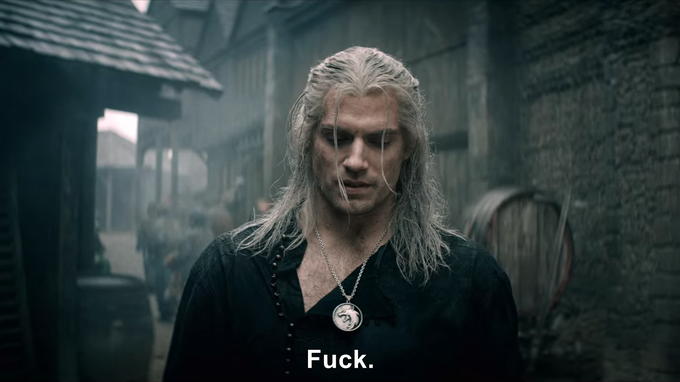 have become the person people go to for clearings at around the age of nineteen, but it really didn’t start there for me. I was very…popular…with all manner of beings as a kid, and a good percentage of them were quite harmful. So it’s a work in progress, and a lot of dealing with the old shadow baggage.
have become the person people go to for clearings at around the age of nineteen, but it really didn’t start there for me. I was very…popular…with all manner of beings as a kid, and a good percentage of them were quite harmful. So it’s a work in progress, and a lot of dealing with the old shadow baggage. England, and I was the weird kid everyone else came to ask about getting the “power of Manon” when the movie The Craft came out.
England, and I was the weird kid everyone else came to ask about getting the “power of Manon” when the movie The Craft came out.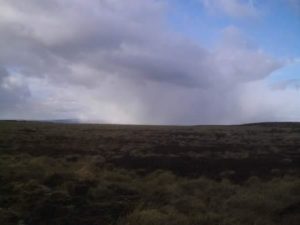


 through the bottom of my boots. Then (usually at the top of a hill), I would fall to the ground to thank the hills when the knots around my heart lifted.
through the bottom of my boots. Then (usually at the top of a hill), I would fall to the ground to thank the hills when the knots around my heart lifted.
 beings that inhabit them. And a place and its inhabitants may be one way on one day, and completely different on another day. Even if you’ve been somewhere before, never assume that a place is going to be or feel the same when you go back there. Keep on top of your basic witchy skills, and
beings that inhabit them. And a place and its inhabitants may be one way on one day, and completely different on another day. Even if you’ve been somewhere before, never assume that a place is going to be or feel the same when you go back there. Keep on top of your basic witchy skills, and vending machines for favors (in exchange for some pretty subpar offerings)?
vending machines for favors (in exchange for some pretty subpar offerings)?
 over but cohabiting with. Where are you in your “neighborhood”? Who do you need to avoid pissing off and who do you need to give a little more care and attention to?
over but cohabiting with. Where are you in your “neighborhood”? Who do you need to avoid pissing off and who do you need to give a little more care and attention to?
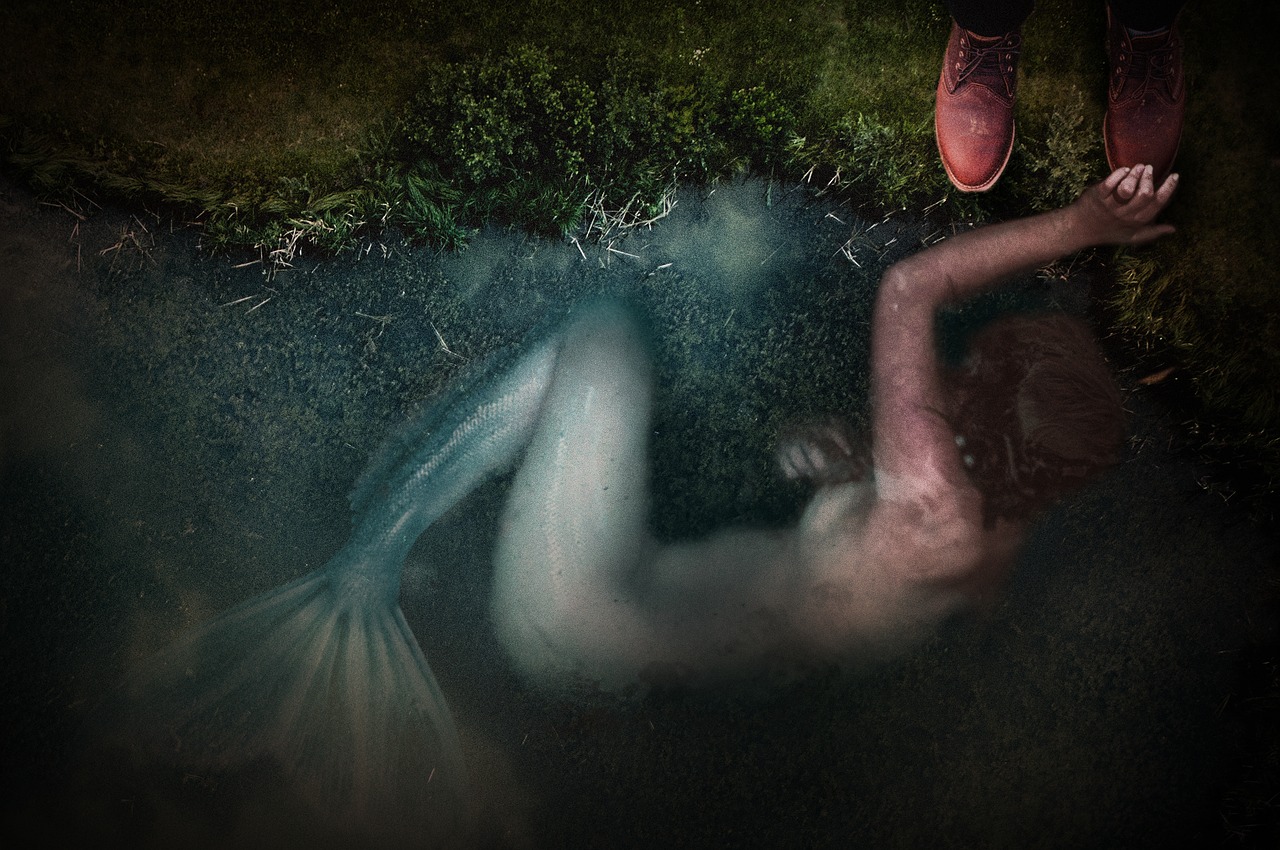


 that entertainment media is focusing on similar things. Are people really seeing that stuff, or are those things arising from the energy and belief of the consensus and becoming entities in their own right? Who knows? It’s kind of like Schroedinger’s cat in that we just don’t know and cannot know without somehow opening “the box”. But ultimately it doesn’t matter either – especially for magic workers. Because we tend to have to work with what we encounter, in the form in which we encounter it, and at the time when we encounter it regardless.
that entertainment media is focusing on similar things. Are people really seeing that stuff, or are those things arising from the energy and belief of the consensus and becoming entities in their own right? Who knows? It’s kind of like Schroedinger’s cat in that we just don’t know and cannot know without somehow opening “the box”. But ultimately it doesn’t matter either – especially for magic workers. Because we tend to have to work with what we encounter, in the form in which we encounter it, and at the time when we encounter it regardless.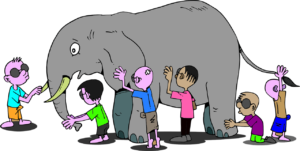


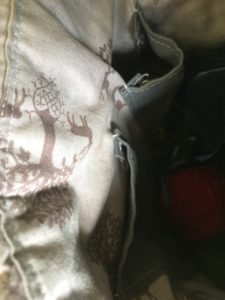
 middle of them, and although I haven’t really found good scholarship on them, my experience has been that these are both effective tools and apotropaics. They’re protective against the Unseen, and allow you – again, in my experience – to see through glamours and things that are normally unseen if you look through them.
middle of them, and although I haven’t really found good scholarship on them, my experience has been that these are both effective tools and apotropaics. They’re protective against the Unseen, and allow you – again, in my experience – to see through glamours and things that are normally unseen if you look through them. general because it has so many uses. You can use it to salt boundaries, protect, and banish. But black salt is just taking regular old salt and leveling it the fuck up! The addition of iron, ash, and (in my case) ground wolf bone, makes black salt an excellent addition to a go-bag. It’s like an apotropaic powerhouse!
general because it has so many uses. You can use it to salt boundaries, protect, and banish. But black salt is just taking regular old salt and leveling it the fuck up! The addition of iron, ash, and (in my case) ground wolf bone, makes black salt an excellent addition to a go-bag. It’s like an apotropaic powerhouse! energy that might “grow up” to get its own ideas and start its own trouble. Spun fiber can provide a bridge, delineate space, and serve as an offering in its own right. I have two spindles that I typically use in ritual work: one is a collapsible spindle that fits in my bag; and the other,
energy that might “grow up” to get its own ideas and start its own trouble. Spun fiber can provide a bridge, delineate space, and serve as an offering in its own right. I have two spindles that I typically use in ritual work: one is a collapsible spindle that fits in my bag; and the other,  my large one, was a gift to thank me for help given. I adore my large one because it feels weighty and authoritative – like a wand. It’s something I’ve wielded in ritual before now when opening portals and working my will. The collapsible one lives in my purse (yes, it’s that small) along with the sheep knuckle I use for yes/no divination.
my large one, was a gift to thank me for help given. I adore my large one because it feels weighty and authoritative – like a wand. It’s something I’ve wielded in ritual before now when opening portals and working my will. The collapsible one lives in my purse (yes, it’s that small) along with the sheep knuckle I use for yes/no divination. resonance to this item that just works. I’ve engraved it with words of power (which I won’t show here), and it’s one of my favorite spirit weapons for subduing, setting up some hardcore protective space, or for when things go bad. I don’t know whether it’s wholly iron or steel (which is mostly iron anyway), but it’s kickass anyway.
resonance to this item that just works. I’ve engraved it with words of power (which I won’t show here), and it’s one of my favorite spirit weapons for subduing, setting up some hardcore protective space, or for when things go bad. I don’t know whether it’s wholly iron or steel (which is mostly iron anyway), but it’s kickass anyway. This is one of my more McGyver-type items. Red thread can be used to bind and protect, or create new items (like a crossroads effigy or protective rowan cross). It can also be used for knot spells, marking off space, and much more. The yarn I use is hand spun with intent and then ritually consecrated.
This is one of my more McGyver-type items. Red thread can be used to bind and protect, or create new items (like a crossroads effigy or protective rowan cross). It can also be used for knot spells, marking off space, and much more. The yarn I use is hand spun with intent and then ritually consecrated.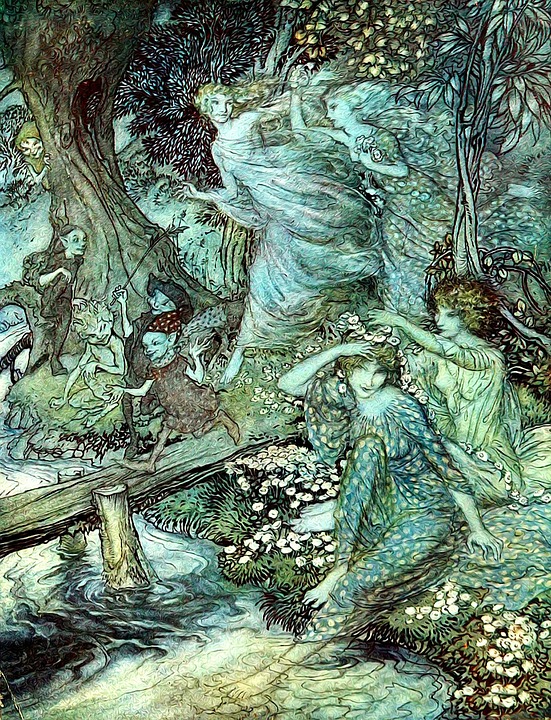
 dwelled upon it. Of course, this onion also affects the kinds of Unseen that might be there: the types of Unseen, their attitudes towards humans, how they expect interactions to look, the pacts that were made between humans and Unseen in years past, and the kinds of offerings they like. Sometimes these layers are things that you might expect. After all, who doesn’t expect Native American layers, and other layers made up of mostly Christianity in America? But even in America, there are also often layers that are far less expected – like the layer of occultism derived from
dwelled upon it. Of course, this onion also affects the kinds of Unseen that might be there: the types of Unseen, their attitudes towards humans, how they expect interactions to look, the pacts that were made between humans and Unseen in years past, and the kinds of offerings they like. Sometimes these layers are things that you might expect. After all, who doesn’t expect Native American layers, and other layers made up of mostly Christianity in America? But even in America, there are also often layers that are far less expected – like the layer of occultism derived from 
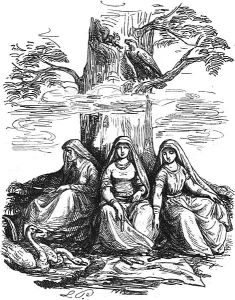 In other words, if space is a container for action, actions set down layers (which call other similar actions to themselves), and there is a force that ensures that those contexts are revisited, then it would stand to reason that spaces have ‘patterns’ or contexts that get revisited again and again. Not only that, but these patterns don’t just affect humans; as the first Bauschatz quote says, these spaces-as-containers-for-action also seem to apply other beings too. Or at least that’s the best guess of what Germanic Heathens thought about the matter during the Heathen period.
In other words, if space is a container for action, actions set down layers (which call other similar actions to themselves), and there is a force that ensures that those contexts are revisited, then it would stand to reason that spaces have ‘patterns’ or contexts that get revisited again and again. Not only that, but these patterns don’t just affect humans; as the first Bauschatz quote says, these spaces-as-containers-for-action also seem to apply other beings too. Or at least that’s the best guess of what Germanic Heathens thought about the matter during the Heathen period.
 with; to terrifyingly huge chunks of political discourse and so much more. After a couple of decades at this malarkey, I’m finding the differences to be substantial enough that it’s starting to feel like code-switching when talking to people who aren’t Heathen/Pagan/Witches/Druids, and I didn’t even grow up in a particularly religious home. Seriously, I grew up only vaguely Church of England (cake or death) with a mother who graffitied her bible with the names of the Monkees and a Spiritualist father. I also know I still have a long, long way to go and probably won’t manage to completely throw off that Judeo-Christian worldview in my lifetime. Realistically speaking, this is really a generational game, and NONE of us should feel bad or ‘less’ if we struggle to internalize a concept.
with; to terrifyingly huge chunks of political discourse and so much more. After a couple of decades at this malarkey, I’m finding the differences to be substantial enough that it’s starting to feel like code-switching when talking to people who aren’t Heathen/Pagan/Witches/Druids, and I didn’t even grow up in a particularly religious home. Seriously, I grew up only vaguely Church of England (cake or death) with a mother who graffitied her bible with the names of the Monkees and a Spiritualist father. I also know I still have a long, long way to go and probably won’t manage to completely throw off that Judeo-Christian worldview in my lifetime. Realistically speaking, this is really a generational game, and NONE of us should feel bad or ‘less’ if we struggle to internalize a concept.

 children, but can be made safe with some adaptation. For example, the opened iron scissors hung over a crib can easily be a forged iron troll cross (or anything else that’s iron and not sharp) stuffed under the mattress of the child’s bed (or hung on the wall if the child is old enough), and we really don’t need to go back to testing our children to make sure they’re not changelings (by incidentally torturing or killing them).
children, but can be made safe with some adaptation. For example, the opened iron scissors hung over a crib can easily be a forged iron troll cross (or anything else that’s iron and not sharp) stuffed under the mattress of the child’s bed (or hung on the wall if the child is old enough), and we really don’t need to go back to testing our children to make sure they’re not changelings (by incidentally torturing or killing them).